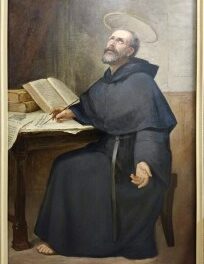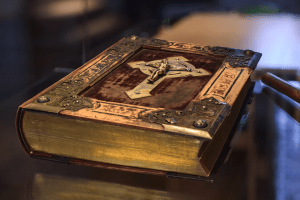We support our Publishers and Content Creators. You can view this story on their website by CLICKING HERE.
Under Louis Napoleon III, the Second French Empire was more successful than the first, and more successful than any political administration in France up to that point. An Empire focused on domestic order and growth had finally brought the liberty and prosperity that Republics and Monarchies had failed to achieve. How could such a successful regime collapse?
It’s no secret that, globally, populism has been on the rise for several years. More interesting than the endless gallons of ink spilt over its current iteration, one can look back on previous instances of populism throughout the turns of history and trace its development. While the various successes and failures of modern populism are still being written—and this is neither an endorsement nor condemnation thereof—there is a fascinating historical example of populism avant la lettre: that of Napoleon, but not that Napoleon.
Louis Napoleon III was Napoleon’s nephew, and arguably was more significant historically. While his uncle captured the French imagination with his successful campaigns against Austria, with his victories at Austerlitz and Friedland, and with his dominance on the global stage, Louis Napoleon’s second Empire from 1852-1871 was significantly more influential on France internally, and by extension the world, than anything his uncle had achieved.
However, to understand how Louis Napoleon managed to succeed in this regard (and of course to elaborate thereon), it is necessary to understand how he came to found his Second Empire, particularly as it pertains to the economic impact of revolution after revolution on the hapless and abused majority of people in France.
From 1789 until 1852, the political history of France could be described as a series of dashed hopes. The Revolution of 1789 that was supposed to bring liberte, egalite, fraternite instead brought bloodshed and genocide against Catholics (at least in the Vendee). This rampant violence resulted in the flight of those who could afford to, taking with them all of their financial means. Tax revenues fell to a trickle, and the Jacobins decided to print their way out of poverty. Of course, this failed, with the assignat losing 90% of its face value. Those Frenchmen who had hoped the Revolution would ease their financial hardships were sorely mistaken. Chateaubriand, seeing the bloodshed and devastation caused by this Revolution, was said to have uttered, “Is this what you call liberte?”
Napoleon Bonaparte’s restoration of order and extravagant gallivanting across Europe may have briefly led to a flurry of French glory, but catastrophes at Borodino and Waterloo rendered that short-lived. At the end, the Frenchman saw himself economically no better than before the Revolution, with Napoleon’s constant war-economy leading to massive production of weapons and uniforms, but little in the way of economic growth. Moreover, conscription and high taxes placed further hardship on French families as their working-age men went off to war and frequently came back wounded, or not at all. It was, in essence, the embodiment of Hayek’s pithy line: “if every worker was staffed in the army and fleet, we’d have full employment, and nothing to eat.”
The Bourbon Restoration did have some success in improving the lot of the average Frenchman, though this was on account of the stability brought by the regime, rather than any economic growth or innovation. While its main achievements were cultural, not economic, and while art and literature flourished, the economy stagnated. France’s lack of economic development led to British goods flooding the market, to which the Bourbons responded with protectionist tariffs, reaching 120% of the values of goods. The aim of protectionism is to protect a nation’s industry from foreign competition, but Bourbon France had no industry to protect. The price of goods skyrocketed, with no domestic counterparts to offset them.
There was great hope for Louis-Philippe and his “liberal monarchy” after the July Revolution of 1830, but as happens too frequently, those new hopes for governmental reform become the greatest inhibitor thereof. His liberalism never materialized, and the French economy sputtered and stagnated through two decades until the proclamation of the Second Republic in 1848.
Imagine what it must have been like to be a Frenchman during this Republic. For the better part of a half-century, your country had undertaken every political lurch and foreign escapade that its leaders deigned to try. You had seen your country invaded and your Churches desecrated. While all this is going on, your standard of living had essentially not changed since the 1780s, with every step forward (removal of forced labor) being coupled with two steps back (hyperinflation, conscription, and stagnation). In the late 1840s and early 1850s, you had suffered through all of that, and what are your leaders now arguing over? Whether to have a “social and democratic” or “liberal” Republic. Politics, the machinations of which politicians got which powers, and not economics, the material well-being of the citizenry, were once again the order of the day.
It is perhaps then no wonder that Emperor Louis Napoleon III (or just Louis Napoleon at this point) won his election to the Presidency in 1848 with almost three quarters of the vote. He ran on a platform of preventing a proto-communist revolution and suppressing the ongoing riots that had been a common feature in France for decades (particularly at the end of the July Monarchy), coupled with his support for mass industrialization and economic development. In so doing, he won the votes of members of the aristocracy and bourgeoisie on the one hand and the working class on the other. It would appear that the law and order, plus economic development, platform used by so many populists was written early.
On December 2nd 1851, the anniversary of the Battle of Austerlitz, Louis Napoleon engaged in a self-coup, referred to by co-conspirators as Operation Rubicon (after Caesar’s famous march) and installed himself as Prince-President. In 1852 he passed the new constitution and formally proclaimed the Second French Empire.
Louis Napoleon, now Emperor, immediately quelled the radical revolts that had plagued the end of the July Monarchy and Second Republic, and embarked on his economic program. He wanted to capitalize on the gold rushes in California and Australia that had increased the supply of gold and investment appetite among Europe’s lenders, and so founded France’s first modern banks (Societe Generale still operates to this day). They provided credit to fledgling firms in the textiles and industrials spaces, leading to a boom in France’s industrial output and domestic consumption. With France’s industry now established, he lowered the Bourbon tariffs and opened France’s factories to export markets around the world.
Paris’s population had doubled since 1815, with no new additions to housing or area. It was filled with urban poor and prone to frequent outbreaks of cholera. Louis Napoleon rebuilt it from the ground up (echoes of Augustus’s “I found Rome a city of bricks and left it a city of marble” spring to mind), expanding the housing supply, constructing new sewers and parks, providing clean water to his newly built residencies, increasing the supply of clean water per day provided to the city fivefold. He provided new streetlamps to cover the entire city, earning Paris’s still-used nickname “the city of light.” Similar urban restorations took place in Lyon and Marseille. He even restored ancient forests destroyed by modern war, with one such project in the Gironde region reforesting an area of almost 4000 square miles.
The results of this effort speak for themselves. In 1851 France had 2200 miles of railway (a quarter of the length of England’s rail system, and not much larger than Belgium’s, a country twenty times smaller than France). By 1870, France had 12,500 miles, transporting 100 million passengers per year. The maritime trading fleet grew to the second largest in the world (after England). Industrial production doubled. Foreign trade tripled. Workers, who now found their wages growing for the first time ever (for some this might have been the first period of stable income ever) were quick to spend their hard-earned wages in newly opened department stores, with the first such store, Bon Marche, being opened in Paris in 1852. Quality of life massively improved for the average citizen as capital flooded into the economy, providing work and wage for laborers. France was transformed from a country of peasant and lord akin to Russia to one of worker and business akin to Britain.
Politically too, he finally liberalized France. He welcomed back political exiles, eased freedom of the press, and gave more powers to the legislature. Culture too flourished, with Offenbach’s works being played the world over. By every stretch of the imagination, the Second French Empire was more successful than the first, and more successful than any political administration in France up to that point. An Empire focused on domestic order and growth had finally brought the liberty and prosperity that Republics and Monarchies had failed to achieve. How on earth could such a successful regime collapse?
Sadly, Louis Napoleon forgot the other tenet of the populist playbook: no foreign wars. After squandering his hard-won goodwill in Crimea, Italy, Mexico, and, finally, Prussia, defeat at the Battle of Sedan secured the rise of an Imperial Germany, setting the stage for the many conflicts of the twentieth century, and the end of the most successful regime in the long and proud history of France.
This essay was first published here in October 2020.
The Imaginative Conservative applies the principle of appreciation to the discussion of culture and politics—we approach dialogue with magnanimity rather than with mere civility. Will you help us remain a refreshing oasis in the increasingly contentious arena of modern discourse? Please consider donating now.
The featured image is “Portrait of Napoleon III (1808-1873)” (1855) by Franz Xaver Winterhalter (1805–1873) and is in the public domain, courtesy of Wikimedia Commons.

 Conservative
Conservative  Search
Search Trending
Trending Current News
Current News 






